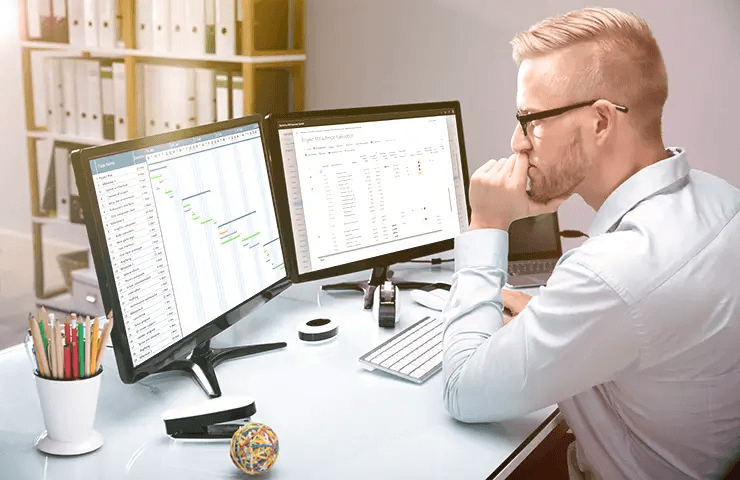
The printing and packaging industry is innovative and constantly launches new products for its customers. New technologies and materials allow continuous improvements or new options. The customers of the packaging producers demand alternatives to stand out from their competitors in the shelves. Frequent use of new technology leads to new procedures. New materials become attractive in terms of price and thus being employed increasingly. The implementation of these new technologies or the use of these new materials keeps on posing new challenges for the ERP systems responsible for mapping the products.
Printing technology today
An impressive example of this is the introduction and ever more successful use of digital printing technology which uses special printing machines. These differ from conventional printing presses for flexo, offset or gravure printing also in how they are mapped in the ERP system. Digital printing does not use physically solid printing plates to apply the print colour but the colour is applied in an alternative way.
Basically, there are two different digital printing methods depending on the desired results and required print run: The laser printing process is rather used for large print runs while the inkjet printing technology is used for large-format prints. The laser printing process generates a copy from electrical loads which is used to selectively apply colour to the print object to create the exact image of the copy (principle of electrophotography). In inkjet printing, coloured ink drops are sprayed on the print object selectively.
Focus: unbeatable price, top delivery times and customisation
Both procedures spare you the sometimes tedious preparatory work and machine set up activities characteristic of other printing procedures. They eliminate setup times and costs for cylinders, engraving and also producing clichés or offset plates. This allows you to print each sheet differently with rather little effort. This makes digital printing processes unbeatably fast and thus economical for small quantities (already from the first copy) or personalized products.
Smaller batch sizes allow more flexible planning and faster reactions to customer requirements. The technical advantages allow for products to be produced on a large scale, inexpensively and in a customised way. This in turn allows for new products and attracting new groups of customers.
Example
The general trend towards addressing customers individually has become obvious and large brand manufacturers are leading the way. Coca Cola or Ferrero require an unprecedented diversity of product labels for one and the same product. They even let their customers have their own name or personal messages printed on the product labels. This intensifies the interaction with the end customers and increases customer loyalty.
What does this mean for packaging producers in terms of it?
For the producers of such labels or packaging this means that they have to react faster and more flexibly to requests and orders, new communication channels of order acceptance (e.g., web shop) and, of course, a conversion within production.
Modern ERP systems can react to these requirements by offering flexible and comprehensive product mapping. This goes beyond the use of article master data, parts list and work plan, and describes the new products as they are required for sales, production and shipping. Modern ERP systems are interconnected and allow the integration of various other systems and the use of data generated in them.
For example, if there is a connection between the ERP system of the packaging producer and the customer’s website or also the web shop of the branded product seller, this enables decentralised data acquisition. This ensures maximum error prevention and a uniform basis for communication for all parties involved.
The next big change is right around the corner
Using modern BI technologies, e.g., Microsoft Power BI, within the ERP system guarantees a fast and clear representation of facts as a basis for decisions which have to be made ever faster. With social listening technology, the internet, discussion forums, social networks, etc. can be specifically combed through for messages and communication regarding your own products. This provides the basis for faster reactions to trends and target-oriented communication.
The new technologies such as the digital printing technology, new and innovative materials and new ways of communication in the consumer goods industry change the processes in the companies of the printing and packaging industry. They make them faster, more customer-specific and more innovative. This requires support from ERP systems that can handle and drive these changes.
With Microsoft Dynamics 365 for Finance and Operations and the industry solution by COSMO CONSULT, companies in the printing and packaging industry have a state-of-the-art ERP system that meets all of these requirements and makes processes fit for this competitive market.
Keywords
More similar blogposts:
Found what you were looking for?
Start your intelligent search now



